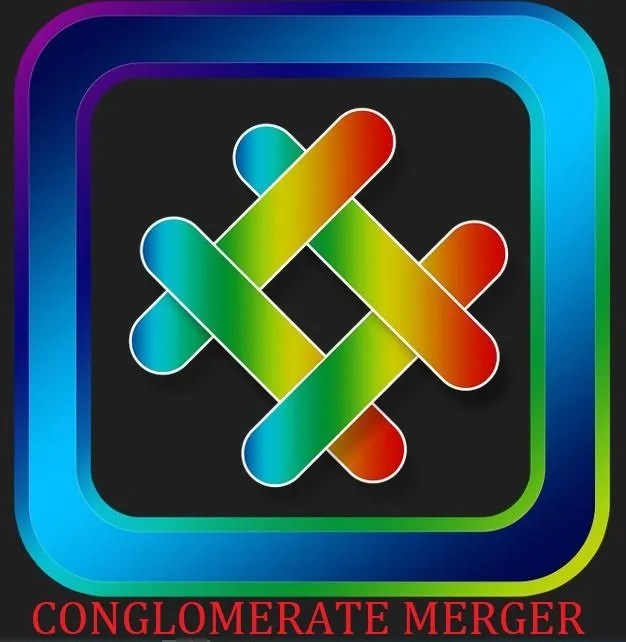
Given the expansion of information and communication technology and the growth of the digital market, conglomerate mergers have regained traction, which could be due to various factors such as exploring new industries or hedging against extreme risks. In preparation for the anticipated growth of conglomerate mergers in the corporate environment, this article provides a knowledge product of the meaning of conglomerate mergers, examples, and the advantages and disadvantages of a conglomerate merger.
Meaning of Conglomerate Merger
A Conglomerate merger is one of the three types of mergers. It involves companies that are not competitors in the product market and are not in a supply relationship. The companies’ products can be one of three types:
1. Complementary Products
Companies going into a conglomerate merger could have complementary products that can be or, in some cases, must be used together. For example, a company that makes toothpaste and a company that makes toothbrushes. The two companies might go into the merger hoping to get more value from consuming the products together than they will from using them separately.
2. Weak Substitute Products(neighbouring goods)
This means that the products have comparable traits or applications but are not sufficiently substitutable for antitrust considerations to be considered in the same product market.
3. Unrelated Products
That is, they are neither replacements nor complements for consumers. However, the items may share similar manufacturing processes or be part of a brand’s product family. Consider a company that makes engines for aero planes and another that makes engines for motorboats.
In summary, a conglomerate merger is a merger of two enterprises that are unrelated to one another. The two businesses are in entirely different industries in other parts of the country.
Pure and mixed conglomerate mergers are the two types of conglomerate mergers. A pure conglomerate merger occurs when two companies with nothing in common unite. In comparison, a diverse conglomerate merger occurs when the goal of merging companies is to grow their market and obtain more customers or extend their product range.
Conglomerate mergers are undertaken for various reasons, some of which are based on observable economic efficiencies, but not all are. Conglomerate mergers, for instance, can result in significant economies of size and scope by allowing companies to share distribution networks, manufacturing processes, standard components, skills, expertise, intellectual property, and even management. Mergers of complementary product companies, for example, might facilitate collaborative marketing, branding, and price strategies, as well as encourage investments in building product systems. Mergers involving weak substitutes can enable companies to devise a plan for differentiating their products and focusing on distinct types of customers. By merging different manufacturing processes or sharing specific inputs, mergers involving items unconnected from consumers’ standpoint might yield better company scope economies.
In addition to these efficiencies, there are four main hypotheses behind conglomerate mergers:
According to the resources theory, companies merge because they have excess resources that are difficult to sell. This is an example of internal know-how, indivisible assets, and personal data that cannot be sold due to privacy restrictions.
The internal capital market theory proposes that conglomerate mergers are a method for a company to use its extra cash without having to lend it out. Internal sources of capital can help a company be more nimble, competitive, and able to move between successes and failures in fast-changing markets. Furthermore, digital conglomerates might have greater internal market intelligence.
Market power theory opines that conglomerate mergers are employed as a strategy to produce unilateral or coordinated effects through foreclosure.
According to agency theory, managers may push conglomerate mergers for their benefit rather than for the use of shareholders. This hypothesis proposes that corporate managers may be motivated by “empire building” rather than profitability in some situations.
Mergers of conglomerates can also be motivated by factors other than economic efficiency. They can, for example, assist businesses in lowering their taxes, obtaining government subsidies, and diversifying risk, though proof of the latter in terms of contributing to firm value is weak. Conglomerate mergers can also be used to connect the activities of companies in different geographic marketplaces. Due to the constraints of attaining scale and overcoming institutional concerns, such as dealing with counterparties while negotiating contracts, conglomerate mergers may be particularly appealing in small or developing economies.
Some best practices for a successful conglomerate merger include;
- Ensuring that the acquirer can monitor and carry out a wide range of tasks following the merger.
- Spending quality time on the integration planning to avoid governance and cultural disputes, capture synergies, and avoid value destruction.
- Evaluating and devising a strategy for leveraging newly acquired talent and intellectual property.
- Maintaining your focus on the strategic objective.
Conglomerate mergers can be complex for businesses with different origins and cultures. There may also be a misalignment in terms of size and management. As a result, the merging companies must devise a post-merger strategy to continue their operations. This strategy could include creating a new corporate culture and a new vision and mission for the merged business, all of which are geared toward the company’s success and the interests of its stakeholders.
Even though conglomerate mergers haven’t been widespread since the 1960s and 1970s, there are larger organizations with the means to broaden their market entry through mergers and acquisitions.
Examples of Conglomerate Mergers
Currently, there are a variety of conglomerates operating around the world, ranging from food producers to chemical manufacturers. The manufacturer could begin by creating and selling services and goods and later expand into developing and expanding it in the future, spanning vast swaths of the economy, from the electronic market to financial services.
A media conglomerate, for example, could start by owning many newspapers before expanding to include television stations, radio stations, and book publishing organizations. Food corporations may begin trading potato chips while forming alliances with other businesses. Its conglomerate might diversify by supplying beverages to other industries.
Famous examples of conglomerate mergers are;
1. Walt Disney Company and American Broadcasting Company (ABC)
The combination of the Walt Disney Company with the American Broadcasting Company (ABC) is most often highlighted as a prime example of a conglomerate merger. Disney bought ABC in 1995, acquiring access to ABC’s national television programming and ESPN’s enormous sports coverage. Because Disney already controlled multiple cable networks at the time of the deal, it would be considered a mixed conglomerate merger, albeit it did provide Disney with a plethora of new distribution and content choices.
2. eBay and PayPal
eBay and PayPal merged in 2002, providing eBay with a more efficient payment method for its goods. This combination brought together eBay’s product platform’s selling talents with PayPal’s existing widespread consumer-friendly electronic payment processing infrastructure. Because of stockholder pressure and rapidly changing business environments in both commerce and payments, the two companies split in 2015. Still, they signed a five-year agreement that guaranteed PayPal’s income while successfully expanding its platform to other competing retailers and financial firms.
3. Honeywell & Elster Merger
Honeywell (a very active M&A portfolio) was interested in this 5.1 billion dollar conglomerate merger in 2016 because Elster would lead to product and regional expansion.
4. COMCAST and UNIVERSAL
The merger of COMCAST and UNIVERSAL took place in 2011 and resulted in a media conglomerate that controls not only how television shows and movies are produced but also how they are delivered to customers’ homes via Comcast’s massive network. Given COVID’s current social and business environment, Comcast’s customers are increasingly turning to the company’s platforms for entertainment and business needs across multiple technology outlets, television, computer, tablets, and smartphones, making this merger even more valuable and advantageous.
Advantages of a Conglomerate Merger
Despite their rarity, conglomerate mergers have several advantages. They include;
1. Business Diversification:
Merging conglomerates allows a corporation to broaden its market. It assists in resolving the risks associated with a weak market. If one market sector is degrading, the firm has an opportunity to improve the situation by performing well in the other varied area. It is widely regarded as a conglomerate diversification strategy. The danger of losing money is reduced by diversification. If one company sector performs poorly, losses can be made up by other, better-performing business divisions.
2. Product cross-selling:
If the merging companies are involved in separate enterprises but have the same target markets, a conglomerate merger can assist them in cross-sell their existing products. Cross-selling would eventually lead to increased revenues for the new company.
3. Excess Cash Is Put to Good Use:
When a business has an excess of cash but needs more opportunities to expand in its region, it can invest it in a different organization in a variety of areas through conglomerate mergers to put the idle assets to good use.
4. Improves Customer Base:
Two companies involved in a conglomerate merger can strategically pitch their products to the other company’s clients—this aids in developing a more extensive client base. As a result, the agreements and benefits can be expanded. For example, Company A, which specializes in radio manufacture, merges with Company B, which specializes in watch production, to establish Company C. Company C now has a significant customer base to whom it may promote its products.
5. Increase Synergies:
A combined entity consistently outperforms each isolated entity. It creates synergy by enhancing the merged entity’s sales and revenue.
6. Increases Human Resource Utilization:
When the necessity arises, the company can utilize managers from various industries. This results in the most efficient use of human resources.
7. Scale Economies:
It aids the company in achieving economies of scale. Various company costs, such as research and development costs, advertising costs, and so on, are distributed among multiple business units. It aids in lowering production costs per unit and achieving economies of scale.
Disadvantages of Conglomerate Merger
The following are the drawbacks of the conglomerate merger:
1. Lack of Previous Experience in Managing the New Business:
If the acquiring firm lacks experience in the acquired firm’s industry, the new firm will most likely establish weak corporate governance procedures, poor pricing structures, and inexperienced, underperforming personnel. A conglomerate merger can be dangerous for a buyer in this purchase because the organization’s management is unlikely to have prior experience in the sector in which its target operates. As a result, the gaining organization will be unable to capitalize on the anticipated favorable circumstances of the consolidation, such as expanding product offers. The lack of “on-point” industry experience may cause the objective organization’s exhibition to deteriorate after the merger.
2. Focus Shift in Business Operations:
Diversification is frequently connected with reward, but it also involves dangers in corporate functions. Diversification can divert attention and resources away from core operations, resulting in poor performance. When two firms merge in a conglomerate merger, management must expend significant effort to recognize the new business market, corporate activities, etc. Otherwise, firms will shift their focus away from core business activities and into other business areas, leading to bad performance across all industries.
3. Difficulty in Merging Cultural Values:
It is frequently tricky for organizations that function in numerous enterprises to have a defined organizational culture. More so, it can be difficult for organizations in various industries or with different business models to successfully build a new corporate culture in which the behaviors and values coincide with the new firm’s goal and vision. The business culture of an organization combines its business values and mission statement, its corporate vision, and its representatives’ administration and working style. A company’s corporate culture is vital because it influences all aspects of its operations, from manufacturing and sales to accounting and broad strategic choices.
Governance Issue:
When two enterprises with different histories merge, governance becomes difficult. All former clients’ accounts are transferred to the new company, which may use a different accounting process. This causes a lot of problems for management. As a result, when the organization finally chooses to expand and improve new company fronts without involving itself in administration, it appears to be the best option for companies to participate in an aggregate, as previously documented. Successfully merging organizations with various corporate cultures is a problem for any merger. This is especially true in the case of a conglomerate merger when there are likely to be more significant differences between the firms’ underlying principles and operational methods because they operate in different industries.
Many people oppose conglomerate mergers because they believe they decrease market efficiency. They argue that this happens mostly when larger organizations buy smaller businesses, allowing larger firms to obtain more market power by “gobbling up” and consolidating specific industries.
Regardless, a clear plan, sample resources, and a solid foundation to support the transaction are all required for a successful conglomerate merger.




